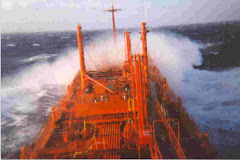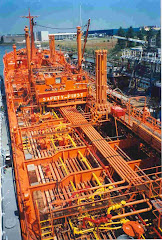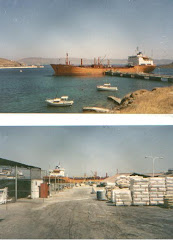The entire dry cargo sector has been hard hit. All publicly listed dry cargo shares have fallen significantly in value. In a prolonged weak market, liquidity and solvency are paramount factors for survival. The winners in the long run with be the financially strong companies, lean and mean, who ride out bad times and have the capacity to buy distressed assets and/ or companies at low prices and benefit with future market recovery.
We do not know how long or deep the current global recession will be but it is evident that the dry cargo sector has been hit hard. This affects all companies regardless of employment strategy. Voyage results on the spot market are lousy. Time charters will be renewed at lower rates, if not terminated on redelivery or renegotiated.
The Capesize and Panamax sizes have been hit hardest. On some routes, rates are the same level or better for Handysize units as Panamaxes. The smaller sizes tend to have less rate volatility but also smaller profit margins and less earning potential in good markets.
There is a lot of uncertainty in the market. Time-charterers are fixing selectively at low rates and smaller time frames on a limited basis.
Vessels values have fallen hard. There are some order cancelations, but the looming danger with the fall in commodity prices is longer term deflation in replacement costs.
Companies in this sector are generally better placed with smaller, more manageable fleets and lower leverage in bad market conditions. Conversely if the recession is shallow, short and V-shaped, those with larger fleets will have more upward potential.
The companies most exposed in a prolonged bear market are those who increased their fleets by large block transactions at top of the market prices or costly M&A deals and took on substantial additional bank debt to finance these transactions. Many have recently obtained their first bank waivers for asset/ loan coverage warranty violations. Some are issuing share offerings to increase their capital and pay down debt. These are basically dilutive in nature.
If conditions remain poor or worsen, eventually they will have to negotiate new covenant waivers and default risks will mount. Their bankers may start to ask them to sell units to repay debt or they may be forced to sell out to competitor companies with stronger balance sheets.
These risks exist across the board in this sector, but each company has to be seen on a case by case basis.
I would be happy to discuss individual companies, employment strategies and make detailed assessments upon consultation.
We do not know how long or deep the current global recession will be but it is evident that the dry cargo sector has been hit hard. This affects all companies regardless of employment strategy. Voyage results on the spot market are lousy. Time charters will be renewed at lower rates, if not terminated on redelivery or renegotiated.
The Capesize and Panamax sizes have been hit hardest. On some routes, rates are the same level or better for Handysize units as Panamaxes. The smaller sizes tend to have less rate volatility but also smaller profit margins and less earning potential in good markets.
There is a lot of uncertainty in the market. Time-charterers are fixing selectively at low rates and smaller time frames on a limited basis.
Vessels values have fallen hard. There are some order cancelations, but the looming danger with the fall in commodity prices is longer term deflation in replacement costs.
Companies in this sector are generally better placed with smaller, more manageable fleets and lower leverage in bad market conditions. Conversely if the recession is shallow, short and V-shaped, those with larger fleets will have more upward potential.
The companies most exposed in a prolonged bear market are those who increased their fleets by large block transactions at top of the market prices or costly M&A deals and took on substantial additional bank debt to finance these transactions. Many have recently obtained their first bank waivers for asset/ loan coverage warranty violations. Some are issuing share offerings to increase their capital and pay down debt. These are basically dilutive in nature.
If conditions remain poor or worsen, eventually they will have to negotiate new covenant waivers and default risks will mount. Their bankers may start to ask them to sell units to repay debt or they may be forced to sell out to competitor companies with stronger balance sheets.
These risks exist across the board in this sector, but each company has to be seen on a case by case basis.
I would be happy to discuss individual companies, employment strategies and make detailed assessments upon consultation.








